2021 Jeep Gladiator EcoDiesel Review: No Apologies

FAST FACTS
| Engine: | 3.0L V6 Diesel |
| Output: | 264 hp, 442 lb-ft |
| Transmission: | 8AT, 4WD |
| US fuel economy (MPG): | 22/28/24 |
| CAN fuel economy (L/100KM): | 10.8/8.5/9.8 |
| Starting Price (USD): | $35,060 (inc. dest.) |
| As-Tested Price (USD): | $51,500 (est, see text) |
| Starting Price (CAD): | $50,615 (inc. dest.) |
| As-Tested Price (CAD): | $74,565 (inc. dest.) |
Logic is probably not an off-road enthusiast’s strongest suit.
If you and I looked at a steep incline littered with large boulders we wouldn’t think much of it. But an off-road enthusiast will likely jump in their Jeep Wrangler and bet you $10 they can make it to the top. Not only that, they are willing to sacrifice road manners, ride comfort, and sound insulation in favor of removable panels, high departure and approach angles, and a general lack of aversion to heading into the great unknown.
Nothing in the current car landscape is as unapologetically off-road biased as the Wrangler and now, the Gladiator lineup. It is clear who the Gladiator is geared towards. But the trouble is, off-road enthusiast or not, a Wrangler-based pickup is an enticing prospect. And the 3.0-liter diesel motor adds the one thing the Gladiator lacked: copious amounts of low-down torque. It will certainly give the off-roading crowd something to be excited about, but does the new diesel motor make the Jeep Gladiator more road-friendly and easier live with?
The torque monster
Compared to the 3.6-liter Pentastar V6, you lose about 20 horses with the EcoDiesel, but you also get 442 lb-ft of torque instead of just 260 lb-ft from the gas engine. The biggest advantage of the engine however is its robust mid-range. With peak torque available from just 1,400 rpm, tapping the throttle is enough for the Gladiator to gain speed quickly. Low-down torque is also especially beneficial while off-roading, as you don’t need to be caning the engine to crawl up that steep incline.
Admittedly, the engine isn’t the most refined—but then, diesels rarely are. It wakes up with a judder and sounds clattery at start up, and the Gladiator’s insulation—rather the lack of it—doesn’t do it any favors either. But it all seems to come together once you roll off the line. The sound stays mind you, but the immense torque helps the large Jeep roll away effortlessly. Plus, you never need to push the needle past its comfort zone of 4,000 rpm, as all the torque is available well under that mark. Be it in the city or out on the highway, overtakes are quick and effortless, so long as they are in a straight line.
SEE ALSO: 2020 Jeep Gladiator Mojave Review: Honestly, Why Not?It is also more fuel-efficient than its gasoline sibling. The EPA estimates that the Gladiator EcoDiesel can return 22 mpg (10.8 L/100 km) in the city, 28 mpg (8.5 L/100 km) out on the highway for a combined figure of 24 mpg (9.8 L/100km). The upgrade to diesel does cost $6,000 however; $4,000 for the engine and the extra $2,000 for the transmission.
But how much of a Jeep is it?
Pretty much all of it. Given that the Gladiator’s as aerodynamic as a block of cheddar, and there is virtually no sound insulation to speak of, things inside the cabin get noisy, fast. And the faster you go, the noisier it gets. Out of the highway, if you don’t have music playing, you’d want to pull your eardrums out.
It’s not the most composed ride either. In the city, while you won’t feel the minor bumps and undulations, the bigger ones will make you realize that the body and chassis are separate pieces glued together. Lateral judder is more prominent on city streets at speeds of up to 30 mph (50 km/h) but all but disappears at highway speeds.
Speaking of, while the bump absorption is sorted out, the Gladiator makes it quite clear that it doesn’t appreciate changes in direction without prior consultation. It will comply, but it is not pleasant. Given, it’s far from a corner carver, but driving even remotely spiritedly feels like pushing your luck to cause a tip over. The Gladiator does not like taking corners quickly. Not to mention, the steering gets increasingly vague as the speeds climb and you can never quite judge how much braking you need. Combine that with the immense wind and tire noise and driving long distances is taxing and fatigue-inducing. It however shouldn’t come as a surprise as the Gladiator is essentially the Wrangler with a bed at the back of it.
SEE ALSO: 2020 Jeep Grand Cherokee Laredo Review: Ace of BaseDuring my week with the Gladiator, we saw quite a bit of snow. I was caught in the squall no less than three times and that’s when the Gladiator came together. I am not a fan of driving on snow, unless it’s in a controlled environment with a safety crew on stand-by. But at the helm of the Gladiator I felt safe. All I had to do was shift the little transfer case lever into 4H and suddenly all was good with the world. You can use the transfer case on the move but it’s most compliant when parked and in neutral. While cars squirmed in a straight line as snow caught under their wheels, I sat unfazed plowing through ankle-deep snow with a coffee cup in one hand. Again, it wasn’t surprising given the truck’s DNA.
And the cabin?
The Gladiator is surprisingly luxurious (relatively) for a dedicated off-roader. Yes, there is no roof lining and you get a mesh net for a door pocket that will constantly snag in your Timberlands, but the seat upholstery is leather. So is the steering wheel, and the dash as well. And yet, it is every bit as hoseable as a Wrangler should be. You will find drain plugs on the floor and in the footwells. All control surfaces are built from weather-resistant materials and there is plenty of rubber and plastic to doubt the Jeep’s inclination. The optional 8.4-inch Uconnect system ($1,995 extra, $1,495 in Canada) has a rubber seal around it to protect it from the elements as do all the knobs and switches all around the cabin.
The passenger side features a massive grab handle for the occupant to hang on for dear life while off-roading. The doors, in usual Wrangler fashion, are removable so the power window controls are on the center dash. You also get a manual parking brake which eats into the stowage space. You only get two cup holders in the cabin though there is ample storage space in the center armrest.
The front seats are comfortable and snug but you do feel you sit on them rather than in them, as they are placed higher up in the cabin. The form also feels a tad tight due to the seats’ proximity to the thin door panels, and the vertically stacked dash along with the short windscreen eats into the feeling of space. Rear seats can be tight for adults but are angled well for comfort. Installing a child seat is a task, as the anchor is behind the seatback. You need to pull it forward to attach which can get infuriating, especially if you have a large child seat, as getting the right angle is tricky. Having said that, it is certainly more secure than the strap system.
Some other notes
The storage bed is quite shallow and is the only cargo stowage on the Gladiator so investing in a tonneau cover is a good idea. But bear in mind, the tonneau doesn’t prevent water from seeping in. So if inclement weather strikes, ensure you move the perishables to the cabin. The tonneau is more or less a necessity, as unlike the Wrangler, the removable panels can only occupy the bed and without a cover, well … you can use your imagination.
Getting in and out of the Gladiator is a task, even with the side step, though I’ll admit, it does have a sense of occasion to it.
Verdict: 2021 Jeep Gladiator EcoDiesel
The Gladiator is far from perfect. In fact, it is best suited to activities that are off the tarmac, and like its target market, it’s pretty unapologetic about it. But there’s just something about it that is immensely appealing. Despite the noisy interior and wayward driving dynamics, I found myself wanting one. Maybe it’s the personality or maybe it is the road presence, but you cannot deny its desirability. The Gladiator is far from a practical choice when it comes to mid-size trucks.
The one we have here is the Overland trim which starts from $41,910 before options. The diesel powertrain alone adds $6,000 to the price tag. Specced out with comfort features like we have here, you’re looking at a price tag well north of $50,000 (over $74,000 in Canada), so it’s not exactly affordable either.
The Jeep Gladiator is essentially an immensely capable off-roader with a bed at the rear and you cannot deny that. If you find yourself wanting one you’ll probably buy, it as logic is lost in the matters of the heart, isn’t it? But if you do a lot of off-roading, the diesel’s extra torque will be worth the extra cost.
Become an AutoGuide insider. Get the latest from the automotive world first by subscribing to our newsletter here.
LOVE IT
- Look at it
- Immense torque
- Go anywhere ability
LEAVE IT
- Expensive
- Virtually no sound insulation
- As aerodynamic as a block of cheese

More by Kshitij Sharma



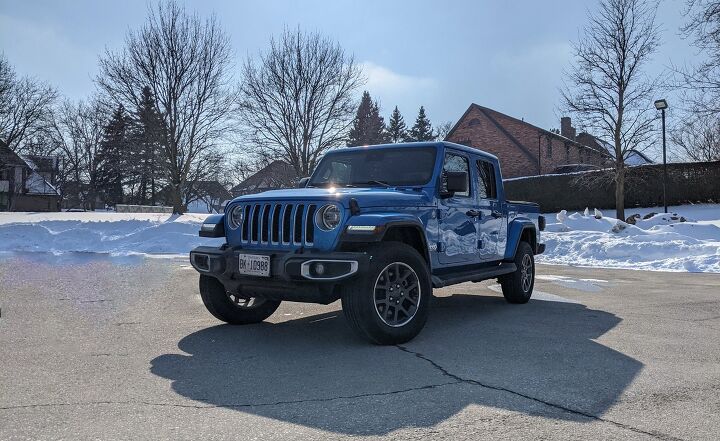





















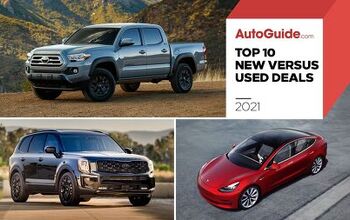
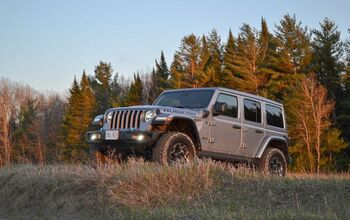

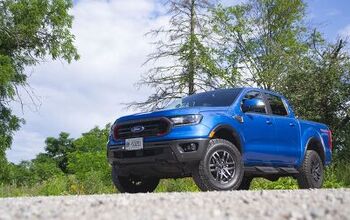


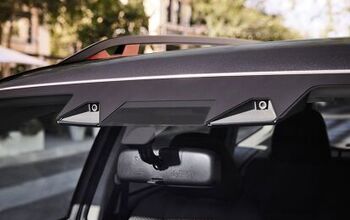




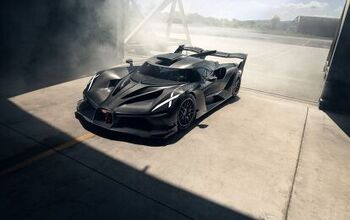



Comments
Join the conversation